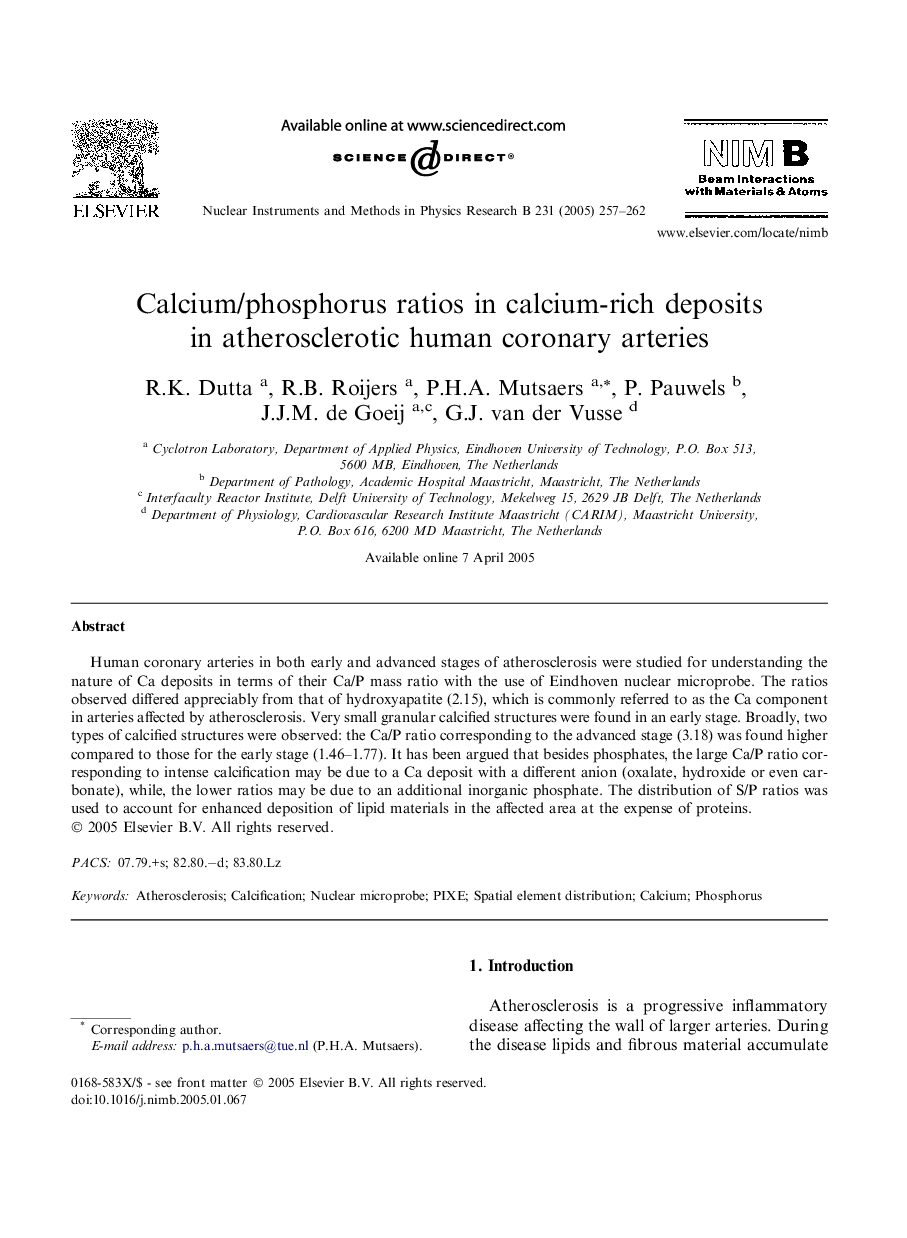| Article ID | Journal | Published Year | Pages | File Type |
|---|---|---|---|---|
| 9818189 | Nuclear Instruments and Methods in Physics Research Section B: Beam Interactions with Materials and Atoms | 2005 | 6 Pages |
Abstract
Human coronary arteries in both early and advanced stages of atherosclerosis were studied for understanding the nature of Ca deposits in terms of their Ca/P mass ratio with the use of Eindhoven nuclear microprobe. The ratios observed differed appreciably from that of hydroxyapatite (2.15), which is commonly referred to as the Ca component in arteries affected by atherosclerosis. Very small granular calcified structures were found in an early stage. Broadly, two types of calcified structures were observed: the Ca/P ratio corresponding to the advanced stage (3.18) was found higher compared to those for the early stage (1.46-1.77). It has been argued that besides phosphates, the large Ca/P ratio corresponding to intense calcification may be due to a Ca deposit with a different anion (oxalate, hydroxide or even carbonate), while, the lower ratios may be due to an additional inorganic phosphate. The distribution of S/P ratios was used to account for enhanced deposition of lipid materials in the affected area at the expense of proteins.
Related Topics
Physical Sciences and Engineering
Materials Science
Surfaces, Coatings and Films
Authors
R.K. Dutta, R.B. Roijers, P.H.A. Mutsaers, P. Pauwels, J.J.M. de Goeij, G.J. van der Vusse,
